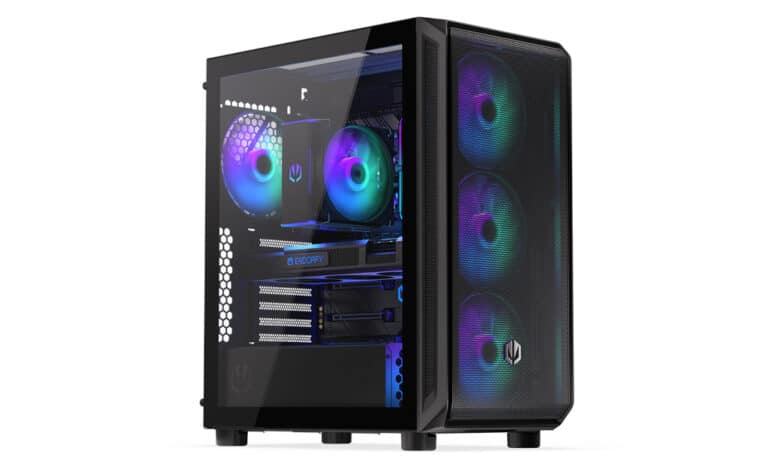
The former SilentiumPC brand is hidden behind the ENDORFY brand. It was founded in Warsaw, Poland in 2007 and initially focused only on PC components in the field of cases and cooling. However, since the portfolio has since been expanded to include various computer accessories of different categories (mouse, keyboard, headsets, etc.), the manufacturer has made the decision to change the name from SilentiumPC to ENDORFY. However, the main focus in the development of new products remains unchanged: good value, good features and solid workmanship. Today we have the new ENDORFY Arx 500 ARGB for you to test.
Unlike the Ventum, Signum and Regnum series, the Arx 500 is a completely new development. The Arx 500 is sold in “Air” and “ARGB” versions and is the smaller brother of the Arx 700, which we have already tested. Identically, the Arx 500 Air has five pre-installed but non-illuminated fans, while ENDORFY provides the ARGB with four illuminated ARGB fans including a control board instead. Regardless of the version, the manufacturer only installs fans with a 140 mm format, which are supposed to provide a high airflow. The only difference in the Arx 500 is the case depth, which is about 6 centimeters less than in the Arx 700. Whether the ENDORFY Arx 500 ARGB can also convince us, you can read here.
Technical details
| Model: | ENDORFY Arx 500 ARGB (EY2A011) |
| Case Type: | ATX |
| Dimensions: | 228 mm (W) x 486 mm (H) x 412 mm (D) |
| Weight: | 8.1 kg |
| Material: | Steel, plastic, tempered glass |
| Color: | Black |
| Front connectors | 1x USB 3.1 Type-C, 2x USB 3.0 Type-A, 1x headphone, 1x microphone |
| Drive bays: | 1x 3.5″/ 2.5″ 6x 2.5″ |
| Expansion slots: | 7x horizontal |
| Form Factors: | ATX, mATX, ITX |
| Ventilation: | Front: 3x 120/ 140 mm Rear: 1x 120 mm Lid: 2x 120 / 2x 140 mm |
| Radiators: | Front: 1x 240/ 280/ 360 mm Rear: 1x 120 mm Lid: 1x 240/ 280 mm |
| Max. CPU cooler height: | 179 mm |
| Max. Graphics card length: | 350 mm |
| Max. Net part length: | 300 mm (without HDD), 200 mm (with HDD) |
| Max. Depth front radiator (without fan) |
35 mm |
| Max. Depth lid radiator (with fan) |
55 mm (depending on motherboard and RAM could be more possible) |
| Cable management space: | 20 – 35 mm |
| Price: | € 109.88 * |
| Features: | Dust filter, cable management, 4x pre-installed 140mm ARGB fans including control board, Tempered Glass |

ENDORFY Arx 500 ARGB: The scope of delivery
In terms of packaging, things remain unspectacular for the ENDORFY Arx 500 ARGB. The cardboard box is brown and has been printed with black as well as blue color for accents. There are also two schematic drawings of the midi tower as well as a table with all the technical data. A listing of the most important features is additionally on top. In the box, ENDORFY wraps the Arx 500 in two conventional styrofoam blocks as well as a plastic foil. In addition, a 25 millimeter thick foam mat was placed in front of the side window, and a protective film was also stuck to the window.
For accessories, ENDORFY places a plastic bag behind the motherboard tray. Besides cable ties, the bag also contains all necessary mounting screws as well as rubber decouplers for HDD mounting. Furthermore, the manufacturer installs a total of four 140 mm ARGB fans as well as a PWM or RGB control board and a dust filter for the case bottom. As with the Arx 700, ENDORFY does not include any power supply screws with the Arx 500, as these are usually included with the power supply.
External impression
At first glance, there is no difference between the Arx 700 and Arx 500 externally. The front of the Arx 500 is also dominated by a large mesh panel, which is surrounded by a plastic frame, into which additional magnets have been incorporated. This allows the mesh panel to be easily removed and cleaned. It also gives a clear view of the three pre-installed 140mm fans with ARGB lighting.
Another plastic frame closes flush with the sides as well as the lid and has been equipped with further ventilation openings. Unfortunately, there is no additional dust filter on the front.
The lid section of the Arx 500 is made entirely of steel and is divided into two sections. The larger section was implemented by the manufacturer in the form of a modular steel plate. After removing a thumbscrew at the rear, the plate can be dismantled. Underneath, mounting rails for two 120 mm or two 140 mm fans as well as correspondingly large radiators can be seen. ENDORFY also places the I/O panel in the lid. This has two USB 3.0 Type A and one USB 3.1 Type C port as well as two jacks for headphones and microphone and two buttons for power and reset/ARGB.
The left side panel of the Arx 500 is made of tempered glass and has not been darkened. This allows for an unobstructed view of the interior. To facilitate disassembly, the glass was also glued to a steel frame, which is attached to the rear with two thumbscrews. The right panel is made of normal steel, has sufficient stability and is also equipped with knurled screws. In addition, it has a recessed grip at the rear end.
The design of the back is identical to the Arx 700. In the lower area we find an opening for the back of the power supply. Above it ENDORFY has placed seven reusable slot covers that have to be screwed outside the case. The corresponding cover has a magnet. Lastly, above the slot bezels, the fourth 140mm fan with ARGB lighting can be seen.
The underside is dominated by a large-scale ventilation grille. Unlike the front, however, it is much more coarsely perforated in the bottom. The perforation is supposed to ensure that the PSU can suck in enough fresh air from underneath the case. ENDORFY installs four large feet made of black plastic for sufficient distance between the case and the base. To protect the ground, these feet were each covered with a layer of foam rubber.
Interior impression
The interior of the Arx 500 was built in the same way as the Arx 700, except that the free space between the front fans and the PSU cover was reduced. So basically, the interior is also divided into a large as well as a small chamber. The large chamber has room for an ATX motherboard, has pre-installed standoffs and four large cable management openings that have been fitted with rubber sleeves to improve the look. The flat motherboard tray is angled on the right side runs into the wide cable channel behind the tray.
In the front area, the three pre-installed case fans can move air into the interior unhindered. The warm air is then blown out again at the back by the fourth pre-installed 140 mm fan. There is enough room for additional fans or a radiator in the lid or front.
At the bottom, we find the Arx 500’s integrated power supply cover, which is meant to enhance the overall look by allowing the power supply, disks and all cables to be hidden underneath, making the PC look much tidier. Additionally, three more openings for cables can be found on the top, one of which is also rubberized. The placement of a mounting spot for a 120 mm fan is also interesting. Also perforated is the front of the cover, which faces the front of the case.
Under the PSU cover, the mounting point for the PSU as well as a holding point for a 2.5″ or 3.5″ HDD can be seen. To reduce the vibrations of the power supply, ENDORFY provides the Arx 500 with two long strips of foam rubber. Mounting is done via a modular frame that is first attached to the PSU and then slid into the case from behind. The frame also features convenient thumbscrews.
Otherwise, there is a lot of space for cables at the back. Especially the cable channel on the left side offers more than enough storage space for thicker cable strands. In order to be able to lash the cable bundle neatly, ENDORFY provides the Arx 500 with some reusable cable ties with Velcro. Furthermore, the manufacturer has punched numerous steel eyelets into the mainboard tray. Finally, the tray has a cutout for backplates of large CPU coolers.
If you want to install a lot of data carriers in the Arx 500, you’ll have to limit yourself to 2.5″ HDDs or SSDs. For this purpose, the interior offers four mounting places behind the mainboard tray and two more on the PSU cover. Furthermore, there is a mounting point for either a 3.5″ or 2.5″ hard drive in front of the PSU. The mounting requires tools, but is done decoupled via rubber rings.
Workmanship
Looking at the exterior as well as interior workmanship of the ENDORFY Arx 500, there is basically nothing to complain about. The quality of the materials as well as its paintwork appear solid and sharp corners and edges are not to be found. The majority of the materials used also look stable and correspond to the price range. However, the front panel’s plastic frame and the right side panel could have been a bit more stable. Overall, the build quality is okay, but not outstanding. On the other hand, the implementation of many tool-free assembly techniques as well as the function and feel of the modular case elements, such as the lid or front, are praiseworthy. In this context, it can also be mentioned that the side panels can be attached to the body without any problems.
ENDORFY Arx 500 ARGB: Installation of the components
Now we come to the system installation in the ENDORFY Arx 500 ARGB review. For hardware, we are using an AMD Ryzen 5 1400* on an ASUS TUF Gaming B550M-Plus* with 16GB Crucial Ballistix Sport LT gray DDR4-2666*. The Ryzen is cooled by an Alpenföhn Brocken 4* and is overclocked to 3.8 GHz (1.175 V). A Gigabyte AORUS GTX 1060 6GB is responsible for the image output. The power supply is handled by the fully modular LC-Power LC550 V2.31 Platinum*.
Despite the slightly smaller dimensions compared to the Arx 700, there is more than enough space in the Arx 500 as well. The installation of all components was very easy and quickly done. The pre-installed spacers and the sensibly placed as well as rubberized cable management openings were especially helpful. In combination with the cable ties on the back, both the front and the back could be prepared very neatly. If the used PSU is not modular, then the PSU chamber offers more than enough space to be able to accommodate the superfluous cables there. The finished system can be excellently displayed through the side window.
In terms of hardware compatibility, the Arx 500 ARGB has no need to hide. There is still a considerable 179 millimeters of space available for CPU coolers. However, due to the slightly smaller depth compared to the Arx 700, the graphics card can be a maximum of 350 millimeters long. Thus, especially large pixel accelerators won’t fit. On the other hand, there is more than enough room for the power supply. It can be between 200 and 300 millimeters long. Radiators two can also be accommodated in this midi tower without any problems. Depending on the depth, a maximum of one 360 mm radiator in the front and one 240 mm radiator at the same time fit into the interior.
Ex-factory, the Arx 500 ARGB in our test comes with four pre-installed 140mm Stratus 140 PWM ARGB fans, which are also part of ENDORFY’s portfolio. The fans each have a 4-pin PWM connector for power and a 3-pin 5V ARGB header for ARGB lighting. Visually, the manufacturer has designed the fans with a black frame as well as a milky rotor with the ARGB LEDs placed in the fan hub. The specified speed range is between 200 and 1200 rpm, and a fan consumes a maximum of 3 watts (12V at max. 0.25A).
Lastly, we come to the temperatures that were reached in the ENDORFY Arx 500 ARGB. During the stress test, Prime95 and FurMark were run for 15 minutes at a room temperature of 20 °C. Furthermore, the test was performed with three different fan speeds.
Scenario |
Temperature |
| CPU: 50% PWM (950rpm) GPU: 50% PWM (1650 rpm) Open-Air Benchtable (no additional fans) |
CPU: 58.3 °C GPU: 58.2 °C |
| CPU: 50% PWM (950 rpm) GPU: 50% PWM (1650 rpm) 4x 140 mm 50% PWM ( 350 rpm) |
CPU: 62.8 °C GPU: 64.3 °C |
| CPU: 50% PWM (950 rpm) GPU: 50% PWM (1650 rpm) 4x 140 mm 50% PWM ( 800 rpm) |
CPU: 56.2 °C GPU: 60.1 °C |
| CPU: 50% PWM (950 rpm) GPU: 50% PWM (1650 rpm) 4x 140 mm 100% PWM (1230 rpm) |
CPU: 53.6 °C GPU: 59.1 °C |
Looking at the results achieved, it is easy to see that the Arx 500 ARGB does its job very well in terms of cooling performance. At maximum speed, the four pre-installed fans generate decent wind and can cool our test system without any problems. However, fans are clearly audible from the case at a speed of 1230 rpm.
If you reduce the speed to around 750 to 800 rpm, the audible fan noise decreases significantly and the maximum temperatures remain within a green range. A reduction to minimum speed results in a significant increase in maximum speeds under full load, although the temperatures are still very far from the critical range. With a little fine-tuning of the fan curves, the Arx 500 ARGB is thus quite silent-suitable.
ENDORFY Arx 500 ARGB: The lighting options
As mentioned earlier, the Arx 500 ARGB features four pre-installed case fans with ARGB lighting. All fans are factory connected to the PWM and ARGB control board on the back panel. The board has a total of 5 connectors each for PWM and ARGB control and is powered via a SATA connector from the power supply. The connection to the mainboard is also done directly with a 3-pin 5V ARGB or 4-pin PWM connector.
So, controlling the lighting can be done either via the motherboard’s software or directly via the reset button in the I/O panel. For this purpose, numerous lighting profiles are stored on the control board, which can be changed by pressing the reset button. Alternatively, the lighting can also be completely deactivated. Finally, a few impressions of the activated lighting.
ENDORFY Arx 500 ARGB: Conclusion
Overall, the ENDORFY Arx 500 ARGB is a very good case. It offers a spacious interior as well as four very good 140mm fans with ARGB lighting. Furthermore, the built-in control board facilitates the control and connection of all fans. Furthermore, the large fans ensure very good cooling of the installed components. In addition, there are easily removable case elements and the generally very good equipment, consisting of a modern I/O panel, rubberized cable grommets and reusable cable ties. Last but not least, the Arx 500 fits more than usual with a total of seven data carriers.
We found a few negative points in the Arx 500 ARGB, but they should be less significant overall. However, it was noticeable that the steel used could have been a bit thicker at one point or another. The same applies to the plastic frame of the front panel. Furthermore, we do not understand the lack of power supply screws in the scope of delivery. In addition, the assembly instructions could be a bit more precise in some places or at least have higher quality pictures. Finally, it should be mentioned that there are no additional dust filters on the front and in the lid. The air is thus filtered exclusively by the mesh grilles.
With a price of €109 (MSRP), the ENDORFY Arx 500 ARGB costs as much as the Arx 700 Air. The latter offers a bit more space for graphics cards as well as radiators and an additional fan, but they are not illuminated. Similar to the Arx 700, the Arx 500 ARGB does not have to hide from the competition with its overall package. It offers a lot of space, a solid build and comes with four very good ARGB fans including a control board.
ENDORFY Arx 500 ARGB
Workmanship
Structure
Features
Cooling
Value for money
91/100
The ENDORFY Arx 500 ARGB is a very well-equipped midi tower that can convince with a chic ARGB lighting and a high hardware compatibility. Besides the looks, the cooling performance shown is also very convincing. Minor shortcomings only slightly tarnish the overall result.



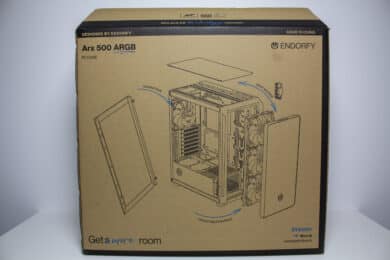
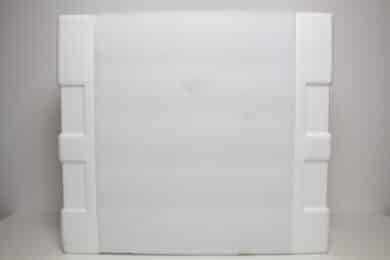


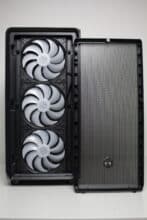

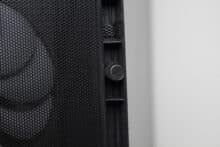
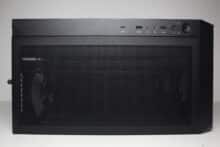




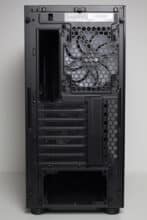


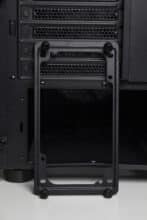
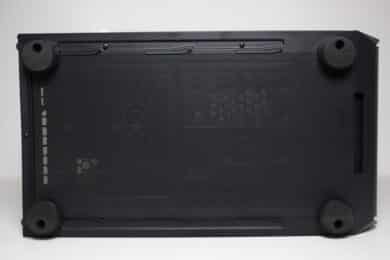


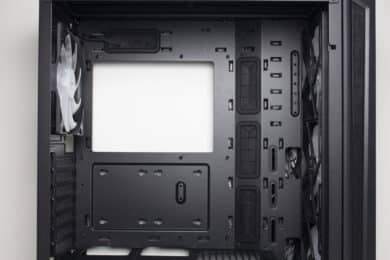
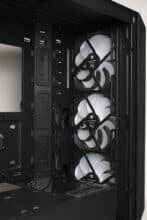
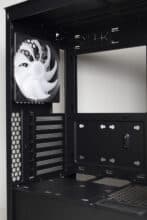

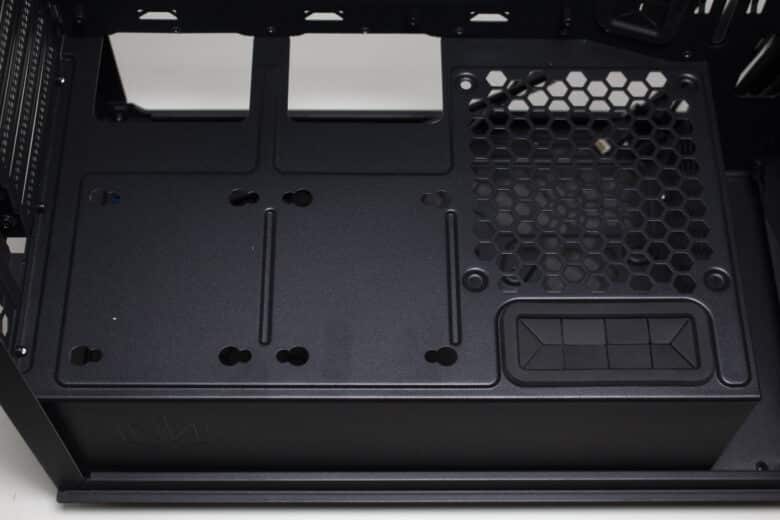
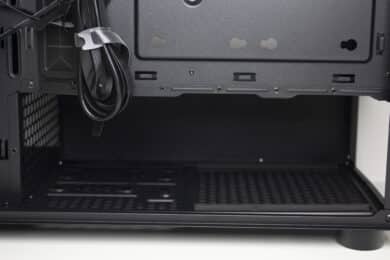

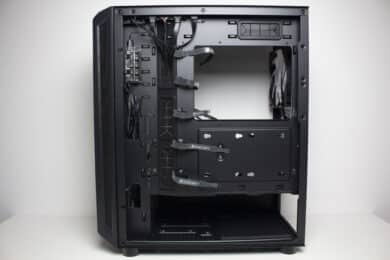
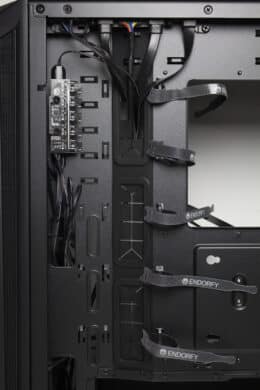

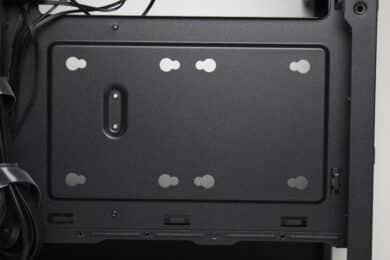

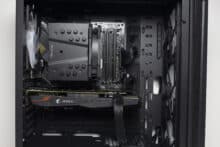
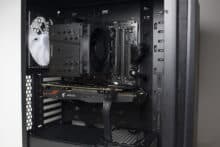







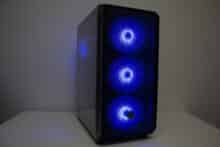
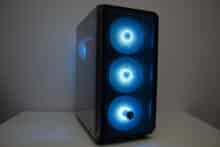
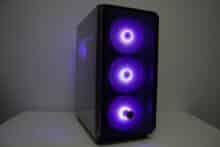


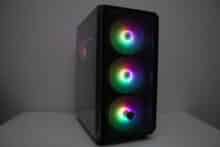

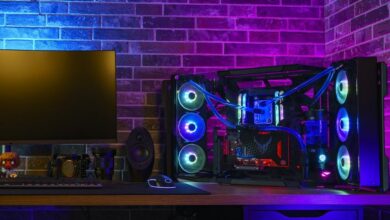
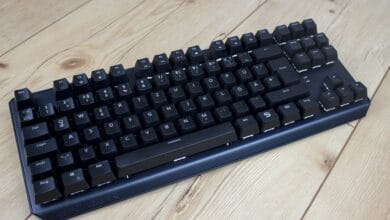
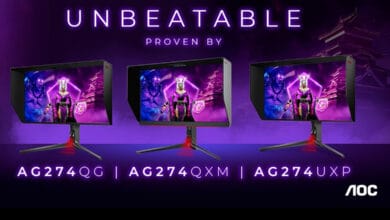
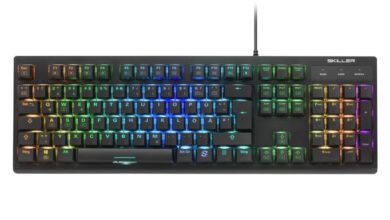
No replies yet
Neue Antworten laden...
Gehört zum Inventar
Beteilige dich an der Diskussion in der Basic Tutorials Community →